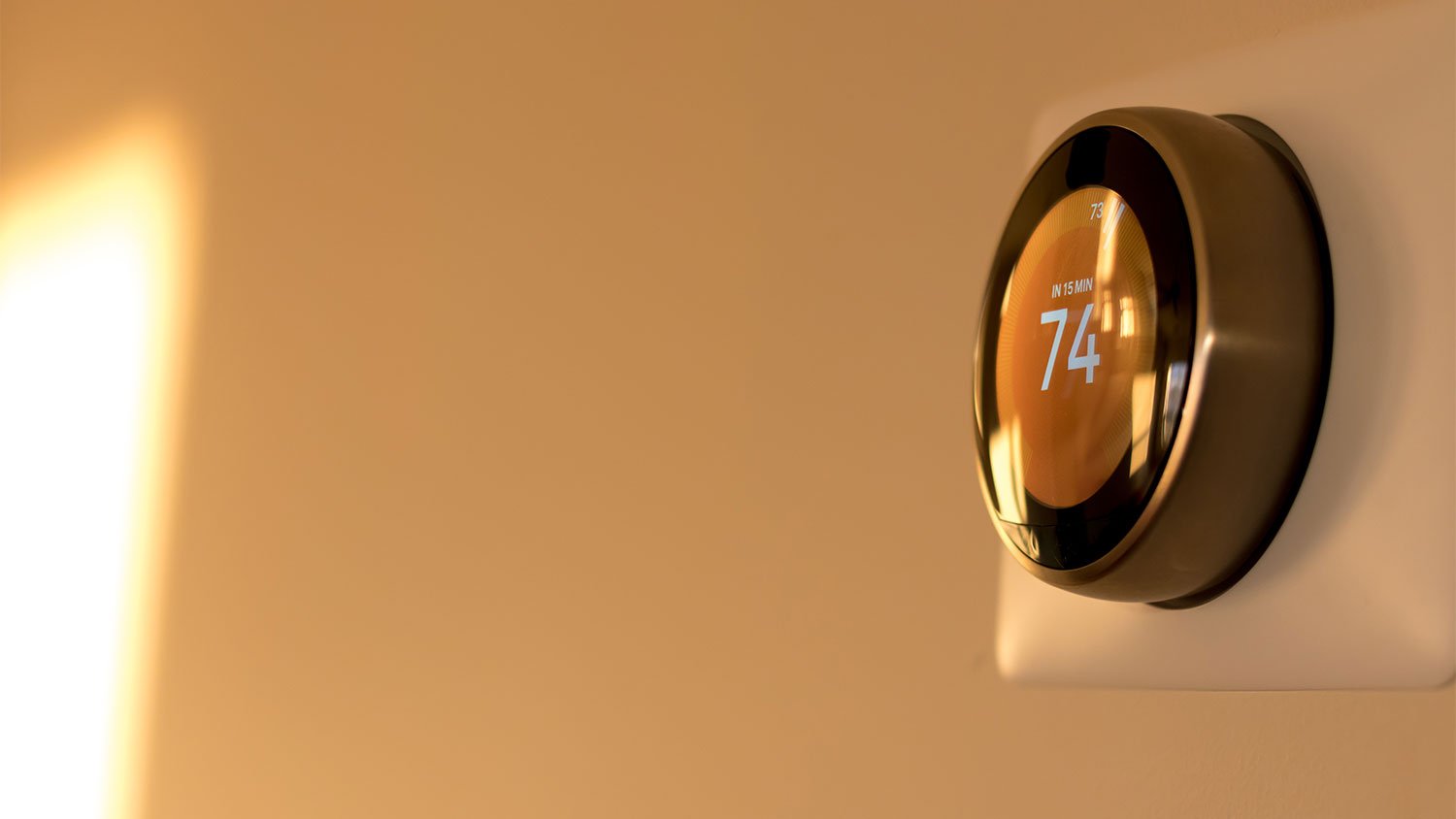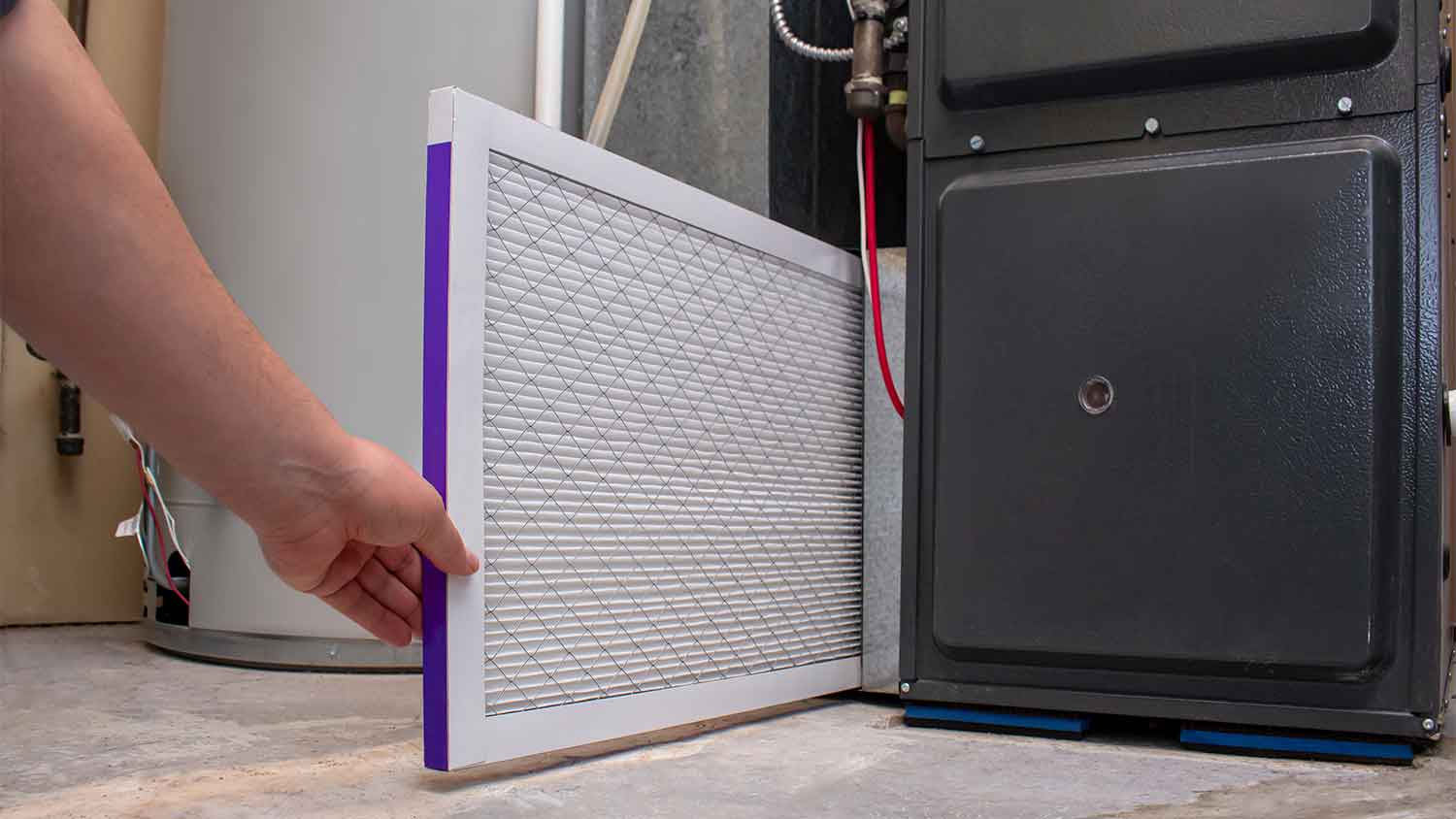
A blower door test can identify air leaks in your home and help boost energy efficiency. Use this blower door test cost guide to see what your test will total.
Breathe easier with a fresh furnace filter


When it comes to furnace maintenance, some jobs are best left to the pros. Fortunately, changing your filter isn’t one of them. In fact, this is a super-simple DIY project that you can finish in about 10 minutes. Here’s how to change a furnace filter to keep your HVAC system running efficiently.

Before doing any work on your furnace, you’ll need to shut it off. You can do this on your thermostat, or if you have a WiFi-enabled thermostat, you can turn it off through its mobile app.
Next, head over to your furnace, find the on/off switch, and shut it off. Not sure where your furnace is? Don’t worry—many people don’t! They’re often in basements or utility closets, so check those places first.
If it’s your first time diving into the depths of your home heating system, you probably don’t know what size furnace filter you need, but this is easy to figure out.
Common filter sizes include:
10 by 20 inches
14 by 20 inches
16 by 24 inches
20 by 25 inches
Your filter’s location will depend on the type of furnace you have, but in most cases, it’s inside the blower compartment. To find it, look for the main service panel near the bottom of your HVAC unit. It will be a metal or plastic component that you can slide off or pull away, and the blower motor will be inside.
If you can’t find the blower compartment or your filter isn’t in it, check your furnace’s user manual. It may have a diagram of your furnace that includes the locations of its various parts.
Next, pull out the dirty filter. It should be easy to remove with your hands, although you might want to wear gloves if the filter is really dirty or old. If it gets stuck, use a flathead screwdriver to gently wiggle it loose.
Dirt, hair, and debris may fly around at this point, so it’s a good idea to wear an N-95 mask if you have allergies.
On most furnace filters, there’s a fibrous side—called the air intake side—that collects dust from the outside so that it doesn’t go into the blower motor. The other side is usually mesh and keeps the fibers in place.
Many filters have arrows on the air intake side, which makes it easy to determine airflow direction. If yours doesn’t, look for the fibrous side that has dirt and debris on it, and take note of which way it was facing in your furnace.

Put the dirty filter to the side and open the new one. Then, slide it into the space where the old one was, making sure that the arrows are facing the same direction that they were before, and close the service panel.
At this point, you can turn your furnace back on. Put the old filter in a plastic trash bag, tie it, and throw it in an outdoor garbage can.
Besides changing your filter regularly, you can also do other things to keep your furnace running well. Here are some furnace maintenance tips to keep in mind.
Pay attention to any strange smells: Rotten eggs, burning rubber, or melted plastic are three smells that could indicate a problem with your furnace.
Listen for odd sounds: If you hear any grinding, squealing, clicking, or banging sounds, note them and share them with your HVAC pro.
Stay up-to-date with professional maintenance: Make sure your furnace is safe and efficient by scheduling an annual appointment with a local furnace maintenance company.
As your furnace runs, the filter prevents dirt, dust, hair, and debris from entering (and potentially damaging) your HVAC system. But when your filter gets clogged, your furnace has to work harder to generate and distribute heat, which drives up your energy usage and bills. Dirty filters can also negatively impact the indoor air quality in your home. Regularly changing your filter is a simple way to keep your furnace working properly.
The thickness of your furnace filter dictates how often you should change it. Whether you’re wondering how often to change a 1-inch furnace filter, a 3-inch filter, or a 6-inch filter, here are the recommended timelines:
| Filter Thickness | How Often to Change |
|---|---|
| 1 to 2 inches | 1 to 3 months |
| 3 to 4 inches | 3 to 4 months |
| 5 to 6 inches | 9 to 12 months |
Changing your furnace filter is a quick task that most folks can handle without professional help. Doing it yourself will usually cost between $10 and $50, while hiring an expert costs $100 to $250 per hour. The most important thing to remember is to shut off your furnace before doing any type of HVAC work.
From average costs to expert advice, get all the answers you need to get your job done.

A blower door test can identify air leaks in your home and help boost energy efficiency. Use this blower door test cost guide to see what your test will total.

Springing for HVAC maintenance costs may seem like an extra—and easy-to-ignore—item on your checklist, but it will save you money in the long run.

What you’ll pay for furnace repairs depends on many factors, including what parts are malfunctioning, where you live, and even the time of day. Here’s a breakdown of what can go wrong with your furnace and the cost to fix those issues.

Tackling unwanted odors from indoor plants can be tricky. Learn how to use a carbon filter in your duct fan to improve air quality.

Baseboard heater covers can endure a lot of wear and tear, but eventually you’ll want to replace them. Here’s the best way to switch out baseboard heater covers.

Having dirty evaporator and condenser coils works your HVAC system harder than it needs to. Here’s how to clean your air conditioner coils like a pro.